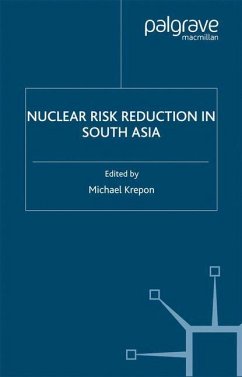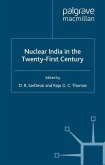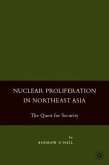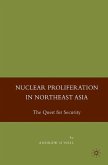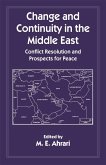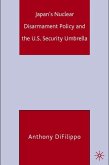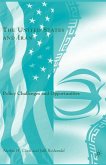The essys in this collection explore and analyze how to reduce the risk of nuclear war in South Asia. Contributors work to introduce the theory and methodology of nuclear risk reduction, to provide specific measures that might work best in the region, and to consider the consequences of missile defense options for stability in Asia. Much work is needed to recduce nuclear dangers between India and Pakistan. While the fact that both countries possess nuclear weapons may prevent a full-blown conventional or nuclear war, the presence of these weapons in the region may also encourage the use of violence at lower levels expecting escalation to be contained by a mutual desire to avoid the nuclear threshold. One only needs to look at the Kashmir conflict for confirmation of this paradox, with serious crises coming more frequently with more severity since the nuclear tests of 1998. Sustained efforts along the line suggested by the contributors of this volume are a crucial step toward reducing nuclear risk on the Subcontinent.
"If ever a region needed innovative measures to reduce nuclear risks, it is South Asia - the world's most volatile nuclear powder keg, according to many. This Stimson Center volume provides the most accessible, expert, and realistic guide to what can and should be done to stabilize the Indo-Pak nuclear relationship."
- George Perkovich, Vice President, The Carnegie Endowment for International Peace and author, India's Nuclear Bomb
"Anyone interested in the mechanics of reducing the danger of nuclear conflict in South Asia must read this book. At a time when India and Pakistan are feeling their way toward detente and China is playing a constructive regional role, the analyses in the Stimson Center's penetrating compendium of essays will enrich negotiators and policy thinkers alike. What lessons from the Cold War may be applied in South Asia remain to be worked out, but this timely volume provides an invaluable data base for choice."
- Nicholas Platt, President, The Asia Society and former U.S. Ambassador to Pakistan
"Michael Krepon's work is timely and valuable. No scholar has thought harder or more incisively about nuclear India and Pakistan than has Mr. Krepon; nor has anyone given clearer or more original thought to nuclear weapons and South Asia's quest for peace and stability. His work is a must for students of the region and all interested in the vital issues of non-proliferation."
- Frank G.Wisner, Vice Chairman, American International Group, Inc., and former U.S. Ambassador to India
"Micheal Krepon's very insightful book comes at the best possible time, the beginning of the first really serious talks on nuclear risk reduction between India and Pakistan. Thus the careful analysis and commentary will be of substantial value to the two governments as they proceed, as well as of special interest to all those concerned over preventing the specter of nuclear arms in the subcontinent."
- Robert B. Oakley, Distinguished Research Fellow, National Defense University and former U.S. Ambassador to Pakistan
"It is rare for a book to be both provocative and balanced, but Nuclear Risk Reduction in South Asia is exactly that. The authors are provocative in identifying new and serious nuclear problems that are emerging in the region. Yet the authors are balanced in their assessment of potential solutions, carefully analyzing the pros and cons of alternative steps towards stability. This is essential reading.""
- Scott Sagan, Co-director, Center for International Security and Cooperation, Stanford University, and author, The Limits of Safety: Organizations, Accidents, and Nuclear Weapons
- George Perkovich, Vice President, The Carnegie Endowment for International Peace and author, India's Nuclear Bomb
"Anyone interested in the mechanics of reducing the danger of nuclear conflict in South Asia must read this book. At a time when India and Pakistan are feeling their way toward detente and China is playing a constructive regional role, the analyses in the Stimson Center's penetrating compendium of essays will enrich negotiators and policy thinkers alike. What lessons from the Cold War may be applied in South Asia remain to be worked out, but this timely volume provides an invaluable data base for choice."
- Nicholas Platt, President, The Asia Society and former U.S. Ambassador to Pakistan
"Michael Krepon's work is timely and valuable. No scholar has thought harder or more incisively about nuclear India and Pakistan than has Mr. Krepon; nor has anyone given clearer or more original thought to nuclear weapons and South Asia's quest for peace and stability. His work is a must for students of the region and all interested in the vital issues of non-proliferation."
- Frank G.Wisner, Vice Chairman, American International Group, Inc., and former U.S. Ambassador to India
"Micheal Krepon's very insightful book comes at the best possible time, the beginning of the first really serious talks on nuclear risk reduction between India and Pakistan. Thus the careful analysis and commentary will be of substantial value to the two governments as they proceed, as well as of special interest to all those concerned over preventing the specter of nuclear arms in the subcontinent."
- Robert B. Oakley, Distinguished Research Fellow, National Defense University and former U.S. Ambassador to Pakistan
"It is rare for a book to be both provocative and balanced, but Nuclear Risk Reduction in South Asia is exactly that. The authors are provocative in identifying new and serious nuclear problems that are emerging in the region. Yet the authors are balanced in their assessment of potential solutions, carefully analyzing the pros and cons of alternative steps towards stability. This is essential reading.""
- Scott Sagan, Co-director, Center for International Security and Cooperation, Stanford University, and author, The Limits of Safety: Organizations, Accidents, and Nuclear Weapons

